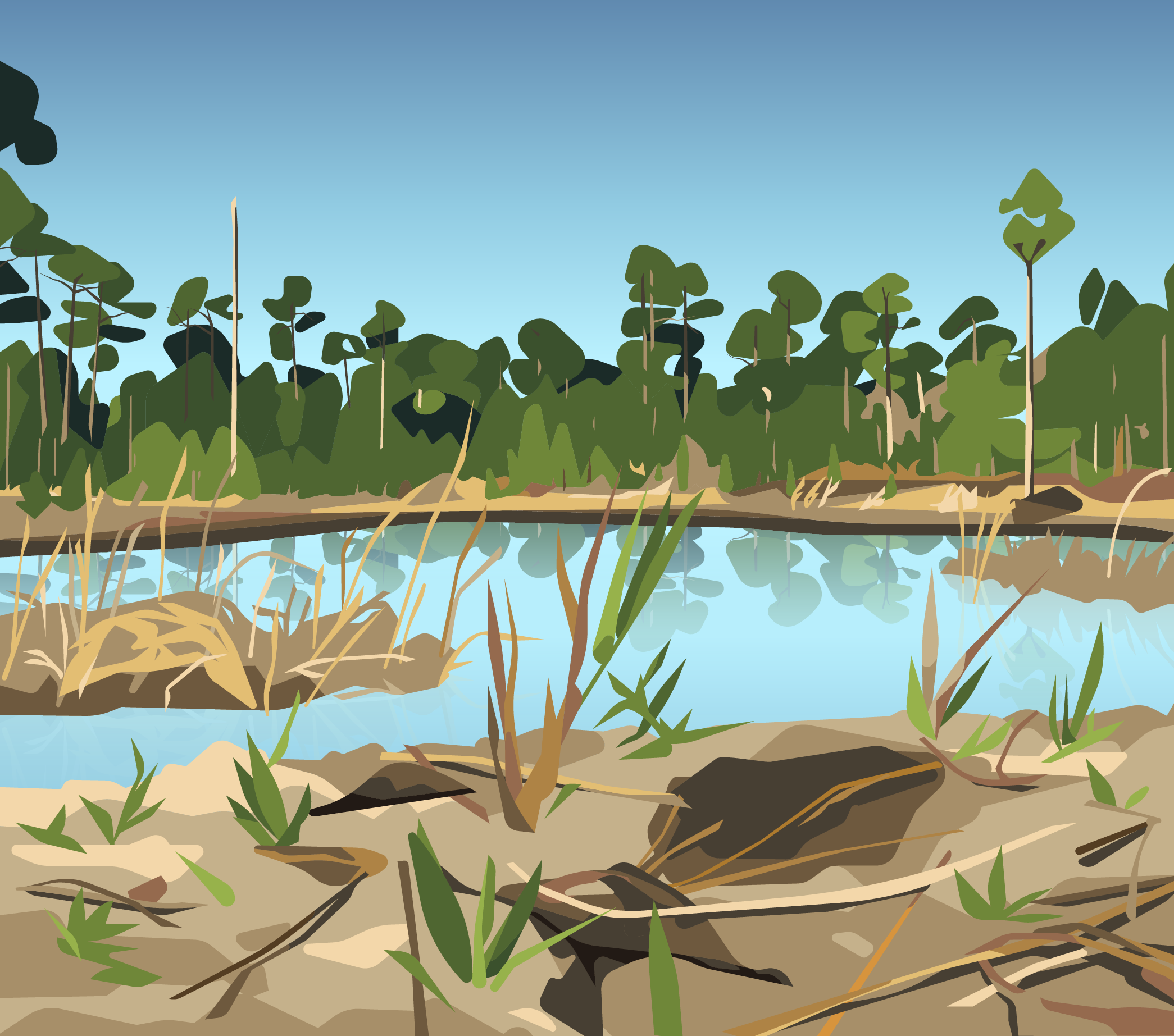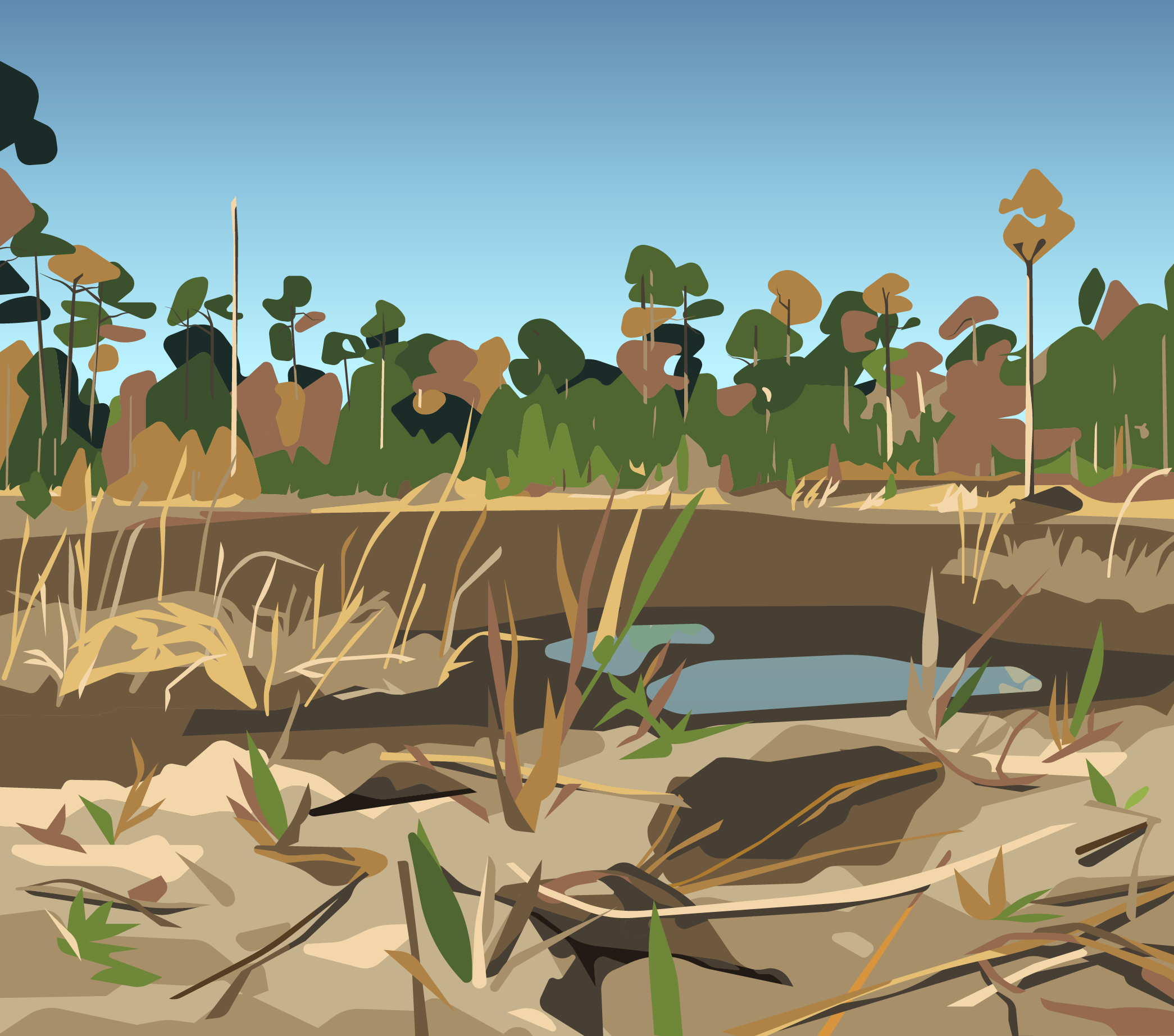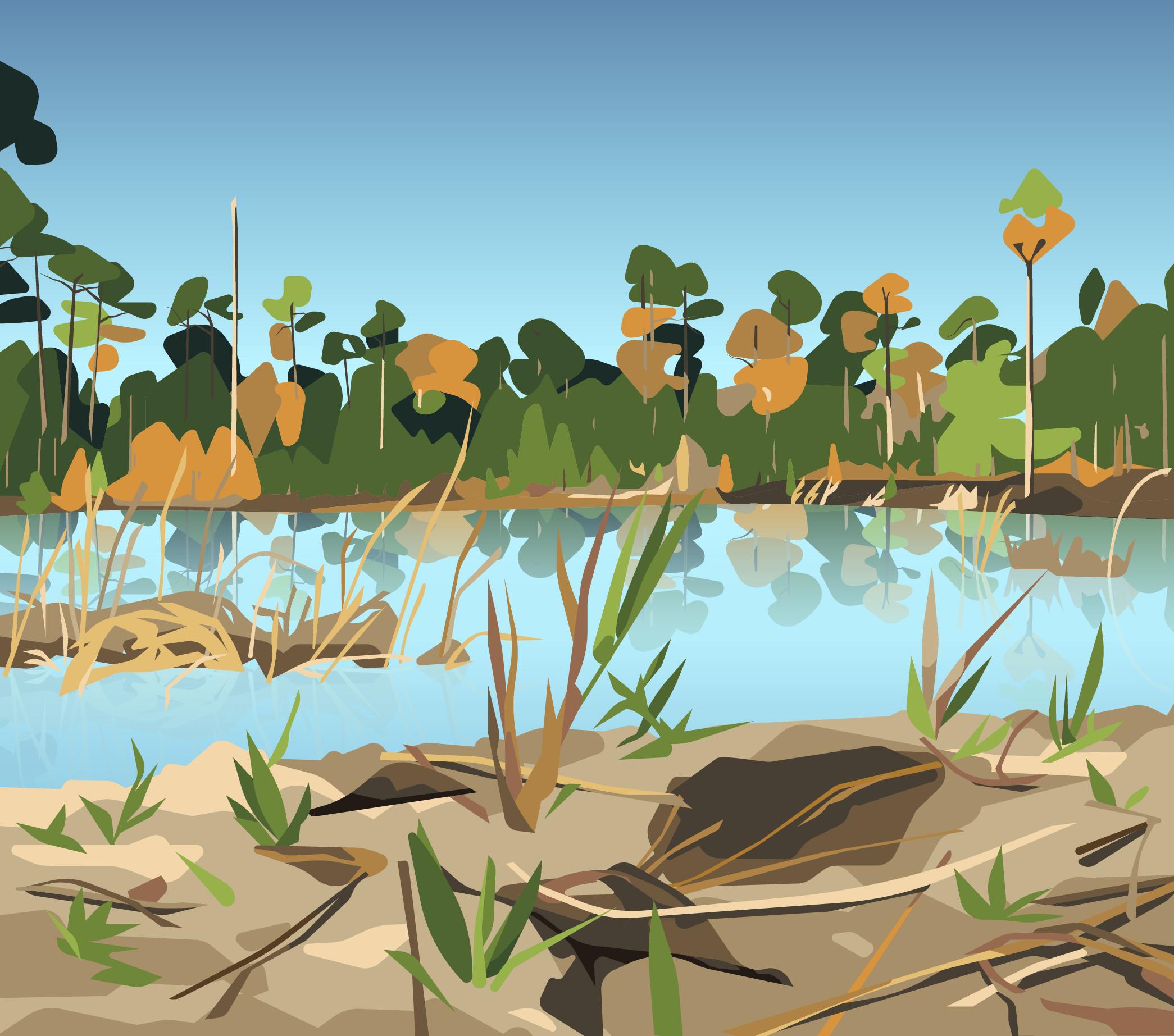Dusky Gopher Frog (Lithobates sevosa)
A shy species of burrowing frog, the Dusky Gopher Frog is named after the Gopher Tortoise burrows it likes to hide in. Native to the American south, the Dusky Gopher Frog uniquely spends much of the year in its longleaf pine savannahs.
When the winter rains arrive, these frogs will travel up a mile to find shallow ponds to breed. These ponds must be ephemeral: full for part of the year, and dry before the next.
That is all the time Dusky Gopher Frogs need to become young frogs and rejoin their parents in the longleaf pine forests. But what if something changes those habitats, so that Dusky Gopher Frogs have nowhere to breed?
A Number of Threats
Their need for two unique, nearby habitats has made Dusky Gopher Frogs vulnerable to habitat loss.
Their longleaf pine forests have been decimated by logging, urban development, and suppression of the regular fires it needs. Less than 3% of what was once longleaf pine savannahs remain.
Just as concerning are changes to their ephemeral breeding habitats. Of the mere hundreds of Dusky Gopher Frogs left in the wild, the last sizable population relies on a single ephemeral Mississippi pond. That’s because in addition to habitat destruction, ephemeral ponds are hurt by something subtler: climate change.
Climate Change and Precipitation
Of climate change’s many possible effects, especially concerning for Dusky Gopher Frogs are changes in precipitation. Dusky Gopher Frogs’ breeding ponds need just enough rain to fill by their winter breeding season and dry over the summer. What happens if climates change, and there’s too little rain?
As amphibians, Dusky Gopher Frogs are sensitive to water at every stage of life. Eggs and tadpoles are fully aquatic. If water dries before they can complete metamorphosis, they cannot survive.
Even terrestrial adults, however, are sensitive to dehydration. Frogs and other amphibians are unique for their porous skin, which they use to drink and breathe. Unfortunately, in drought, this same skin can put Dusky Gopher Frogs at risk of desiccation.
Climate Change and Precipitation
Too much rain can be just as devastating as too little. Added runoff and flooding may pollute Dusky Gopher Frog breeding sites with harmful chemicals, or even introduce new species.
If a water body becomes permanent, then it may become a home to predatory fish, which eat Dusky Gopher Frog young and adults alike. Since Dusky Gopher Frogs only breed about 1-2 times in their lifetimes, it is essential they have ephemeral water bodies free of such predators.
Conservation Efforts
Since the Dusky Gopher Frog was recognized as its own species in 2001, a number of groups have been working to protect it. Since 2002, the Center for Biological Diversity has earned legal protections for both this critically endangered species and its essential habitats. To bolster the species’ populations, several zoos, including the Detroit Zoo, Memphis Zoo, Dallas Zoo and Omaha’s Henry Doorly Zoo have bred and released hundreds of mature Dusky Gopher Frogs back to their native Mississippi habitats. The Nature Conservancy in Mississippi has practiced a more integrated "head-start" program by raising wild tadpoles into mature, releasable adults.
Thanks to these efforts, the terrifying population of 40 adult Dusky Gopher Frogs found in 2007 has increased to 514 in 2021. Despite this flood of adults from captive breeding efforts, Dusky Gopher Frogs have rarely been breeding in their wild habitats. In order for the Dusky Gopher Frog to eventually survive on its own, it will need a broader range of longleaf pine forest and ephemeral wetland habitats.
Learn More
Watch this animation to learn more about how climate change and precipitation can effect frogs like the Dusky Gopher Frog:
Visit the Center for Biological Diversity to support their fight to legally protect the Dusky Gopher Frog and other species.


